How to plant a hawthorn and care for a plant?
Many gardeners are well aware of the plant with small, bright, round fruits. This is a hawthorn. Planting and caring for it is not difficult, because the shrub perfectly tolerates severe frosts, summer heat and is not picky about the soil.
What are the types of hawthorn
With the help of selection, scientists have bred many new species of hawthorn, therefore, in their summer cottages, you can find a variety of representatives of the medicinal plant. The most popular are:
- common hawthorn. The small tree is covered with thorns and reaches a length of 5 meters, blooms well and bears fruit with red berries with orange pulp.
- Siberian hawthorn. It grows up to 6 meters, blooms actively with white-pink flowers from late spring to mid-June. Has fleshy dark red round fruits.
- Chinese hawthorn. It differs from other species in that it is practically free of thorns.
- hawthorn Scarlet. A tall tree in spring is completely covered with beautiful pink flowers, collected in inflorescences. It rarely bears fruit and belongs to the category of ornamental plants that are planted to decorate the backyard.
Hawthorn flowers and berries are collected, dried and used to make medicinal infusions and tea.
Planting a plant
If you want a hawthorn in the country to take root and grow well, you need to choose the right place for planting it. It should be sunny and warm. In the shade, the shrub will develop poorly, grow slowly and bear little fruit.
Hawthorn is planted with 2 year old seedlings in spring or autumn. In the selected place, a hole is dug with a depth of about 60 cm and the same width. Shrubs are planted at a distance of about 1.5 m from each other. It is very important to renew the tips of the root system and remove any dried, diseased growths.
Although the plant is unpretentious, it will thrive better in fertile soil. It is desirable for him to provide good drainage.
- Place a 12 cm layer of fine gravel on the bottom of the hole. Pour 10 cm of sand on top.
- Take half a bucket of humus, add 100 g of superphosphate to it and a half-liter jar of wood ash.
- Mix the ingredients thoroughly and add enough soil from the garden to them to fill the dug hole by a third with the prepared mixture.
- Pour the soil with fertilizer into the hole, put a layer of ordinary soil on top and pour a bucket of water over it.
- Wait for the liquid to absorb, place the seedling in the center, gently spreading the roots, and cover it with earth.
- Tamp lightly and pour with another bucket of water. Sprinkle the damp soil with a thick layer of peat. Dry grass or straw can be used instead.
Important! After planting, do not forget to prune the branches, leaving no more than 2-3 buds on each. And don't plant the hawthorn in close proximity to apple, pear, or cherry trees. These trees have common pests and will be more difficult to control.
Under favorable conditions and good care, the plant will begin to bloom and bear fruit in 6-7 years.
How to properly care
Cultivation of hawthorn does not require scrupulous care. Watch carefully for diseased, dry branches and prune them in time. Trim the young plant in the spring. One year after planting in the soil, cut all branches to a level of 15 cm from the ground. Cut the main shoots in half the next year. Reduce the side branches even more, leaving a couple of centimeters.
In subsequent years, the haircut should be done 2 times a year. In April and July.This procedure helps to awaken dormant buds and enhance the growth of lateral shoots. With the help of competent pruning, the plant can be given the most intricate shapes and make the garden plot unusual and beautiful.
Hawthorn care involves watering. It needs to be produced once a month, using 13-14 buckets of water for this. If the summer is too hot and you notice that the plant is drying out, it is allowed to water it more often until the heat subsides.
It is necessary to systematically loosen the ground and remove weeds. In early spring and autumn, be sure to dig up the soil onto the bayonet of a shovel. This will enrich the soil with oxygen.
Important! To prevent young shrubs from freezing in winter, it is recommended to cover them with the onset of cold weather. For this, straw or dry leaves are suitable.
Plant feeding
Growing a shrub will be more successful if it is fertilized regularly. Starting from 2 years after planting and before the appearance of the first fruits, it is necessary to apply fertilizing 2 times a year.
The first is done during the opening of the leaves. Nitrogen-based fertilizers are suitable for her. Dissolve 4 tbsp in 20 liters of water. l. urea and fill the bush with this liquid.
The second feeding is done at the end of September. Measure out 4 tbsp. l. nitrophosphate, stir them in 20 liters of water and pour the solution over the plant.
Fruiting shrub also needs fertilization. They need to be applied three times a season.
- In spring add 3 tbsp. l. sodium humate for every 10 liters of water and pour at least 30 liters of liquid under one shrub.
- When the flowers bloom, measure out 1 tbsp. l. potassium sulfate per 10 liters of water, prepare 40 liters of solution for one bush and add it to the soil early in the morning or in the evening.
- The following formula is prepared during the ripening of the fruit. You will need to dissolve 4 tablespoons of sodium humate in 20 liters of water and fertilize hawthorn with liquid.
Advice! Some summer residents try not to use chemicals for feeding and fertilize the plant with slurry. Dilute fresh mullein in a 1: 5 ratio and pour 10 liters of solution on the bush. This should be done once a season before flowering.
At the end of September, under each hawthorn bush, it is useful to add 1 half-liter can of wood ash.
How to propagate hawthorn seeds
There are several ways to propagate this shrub, so every gardener is able to choose the best option for himself.
The most difficult and time consuming way is to grow a plant from seeds. It is necessary to collect slightly underripe berries, remove seeds from them, wash and put in a glass of clean water for 3 days. Then clean with sand and wash again. At the end, prepare a 1% solution of potassium nitrate, immerse the seeds in it and leave for 2 days.
The prepared seeds are planted in open ground in early November. When sprouts appear from them and reach a height of 65 cm, they are cut to a level of 15 cm from the ground, side branches are removed, except for two necessary for the formation of the crown.
The difficulty is that seedlings sometimes have to wait for several years, and there is no guarantee that they will appear at all.
Propagation by cuttings
Planting hawthorn cuttings is as follows:
- you need to dig out the root offshoots of the bush and cut them off from the main root without damaging it;
- shake off the soil adhering to them and carefully cut into pieces 10 cm long;
- prepare holes in a greenhouse, put cuttings there at an angle and dig in with a little earth.
When planting, it is important not to confuse the direction of the shoot and plant the cutting in the ground with the thicker side, otherwise it will not take root. When the first shoots appear in the greenhouse from the cuttings, the plant can be transplanted into open ground.
Reproduction by layering
An easy way to get a new plant is to propagate by layering, since they take root quickly.
Dig small grooves around the bush in the spring. Select strong annual shoots, tilt them, place them in a ditch, press down with a metal clip and sprinkle with earth.One tip should remain above the soil surface.
Buried cuttings must be watered and fertilized systematically 3 times during the growing season. A weak solution of ammonium nitrate is suitable for feeding. Gradually, the tip will begin to grow upward. When this happens, it must be covered with earth.
In October, check if the cut has a rhizome. If it is well developed, separate the cuttings from the mother plant and plant them in a separate hole. It is advisable not to touch the weak root and leave the shoot without transplanting until spring.
Copulation
Experienced summer residents know well what copulation is. This is a grafting of a plant with a cutting. It should be done in early spring, before the first buds appear. To plant a hawthorn, you need to choose a stock. It can be a mountain ash or a hawthorn shrub that bears little fruit.
On the rootstock and the handle, they are made along an oblique cut, tongues are made according to special calculations in both trunks, they are connected to each other, tied with a tape and covered with polyethylene. When buds with a diameter of about 1 cm appear on the handle, the polyethylene can be removed.
If the grafting is successful, the plant begins to flourish and bear fruit for 5 years.
Pests
The hawthorn is often attacked by various insects. It is especially susceptible to attacks by apple aphid, hawthorn and leafworm. Parasites use shrubs to winter comfortably, and in the spring they lay larvae in the bark. They feed on the sap of the plant, destroy the fruit ovary and cause great damage.
To kill pests, you can spray the plant with soapy water or use chemicals. Good help:
- karbofos;
- chlorophos;
- nitraphene.
They must be diluted and applied according to the instructions.
Sometimes the hawthorn becomes infected with powdery mildew or spotted rot. If this happens, you need to remove the affected shoots and spray the shrub with fungicide-based preparations.
Growing hawthorns will be of great benefit. After all, it is not only beautiful, but also a storehouse of vitamins. To get sick less often, it is recommended to eat a few dried berries daily.
The hawthorn is also irreplaceable in landscape design. To use it as hedge, the shrub should be planted close to each other and young shoots intertwined. This plant is a great option for the original design of summer cottages, parks and squares.


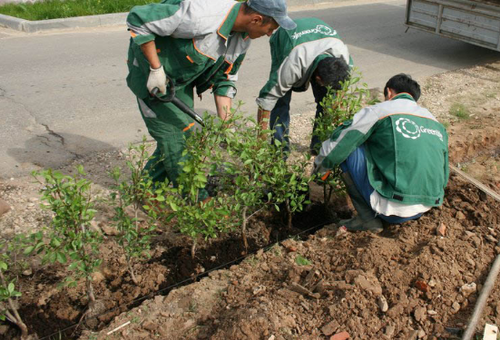
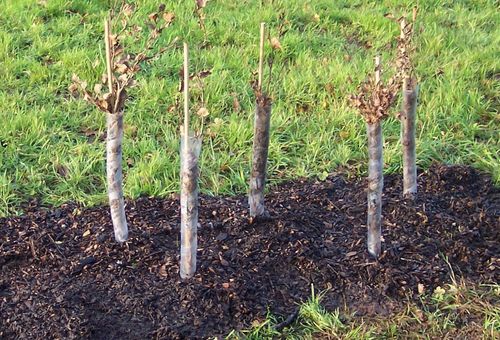



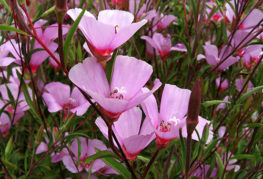
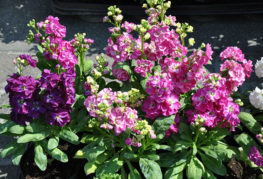
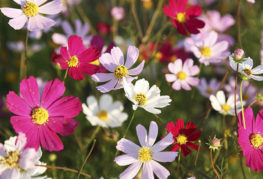
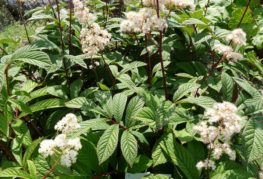

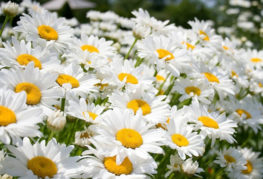
and will be published shortly.